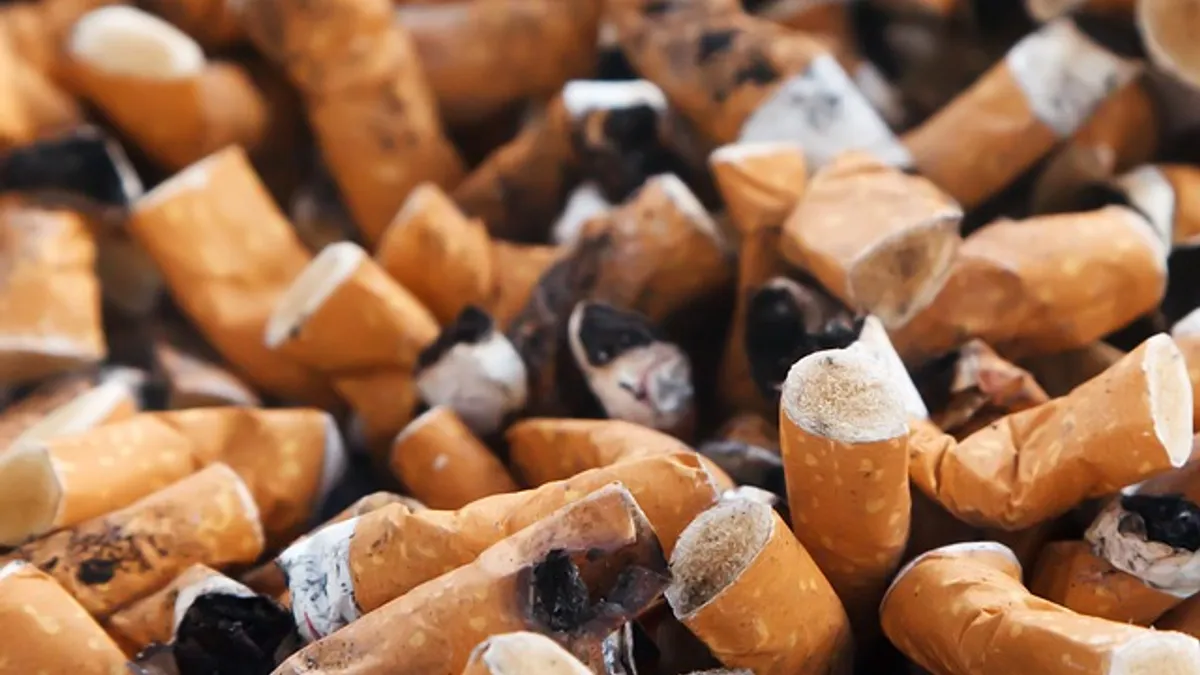Dive Brief:
- Researchers at RMIT University in Melbourne, Australia have published a report that highlights an environmentally-conscious way to pave roads with cigarette butt litter, according to a release.
- After five years of research, the team, led by Abbas Mohajerani, found that mixing cigarette butts with bitumen and paraffin wax will prevent the butts from leaking toxic chemicals. Then butts can be mixed with hot asphalt to develop a "new" type of paving material that can reduce thermal conductivity better than traditional pavement.
- The researchers estimate that 1.2 million metric tons of cigarette butt waste are produced every year, and that number could increase by 50% by 2025. Mohajerani claims these new findings could "[rid] the environment of a huge waste problem."
Dive Insight:
The U.S. Environmental Protection Agency (EPA) describes urban heat islands as "built up areas that are hotter than nearby rural areas," which can cause an increase in energy demand, water quality and greenhouse gas (GHG) emissions. Heat islands are largely attributed to construction and pavement in cities, therefore finding a way to reduce heat conduction in construction material is a crucial method to mitigation. While cigarette butts may be an unconventional aid to this problem, the added-on perk of waste reduction makes this research highly compelling.
A June report from The Ocean Conservancy found that cigarette butts are the most common litter in the world. While companies like TerraCycle have pushed cigarette collection efforts and some government leaders have considered changing state code to prioritize cigarette butt clean-up, reducing this waste has been a difficult task. Finding a way to reuse the waste may be the most efficient option — especially if the reuse method is environmentally-friendly.
Though, while the RMIT researchers claim that their asphalt-cigarette mixing method can stop toxic chemicals from leaching into waterways, city leaders looking to pursue this paving method must be cautious of these claims. It is possible that city residents could push back on this innovative form of city infrastructure due to health concerns, so conducting further risk assessments on the process will likely be the most effective way to pursue it.












